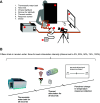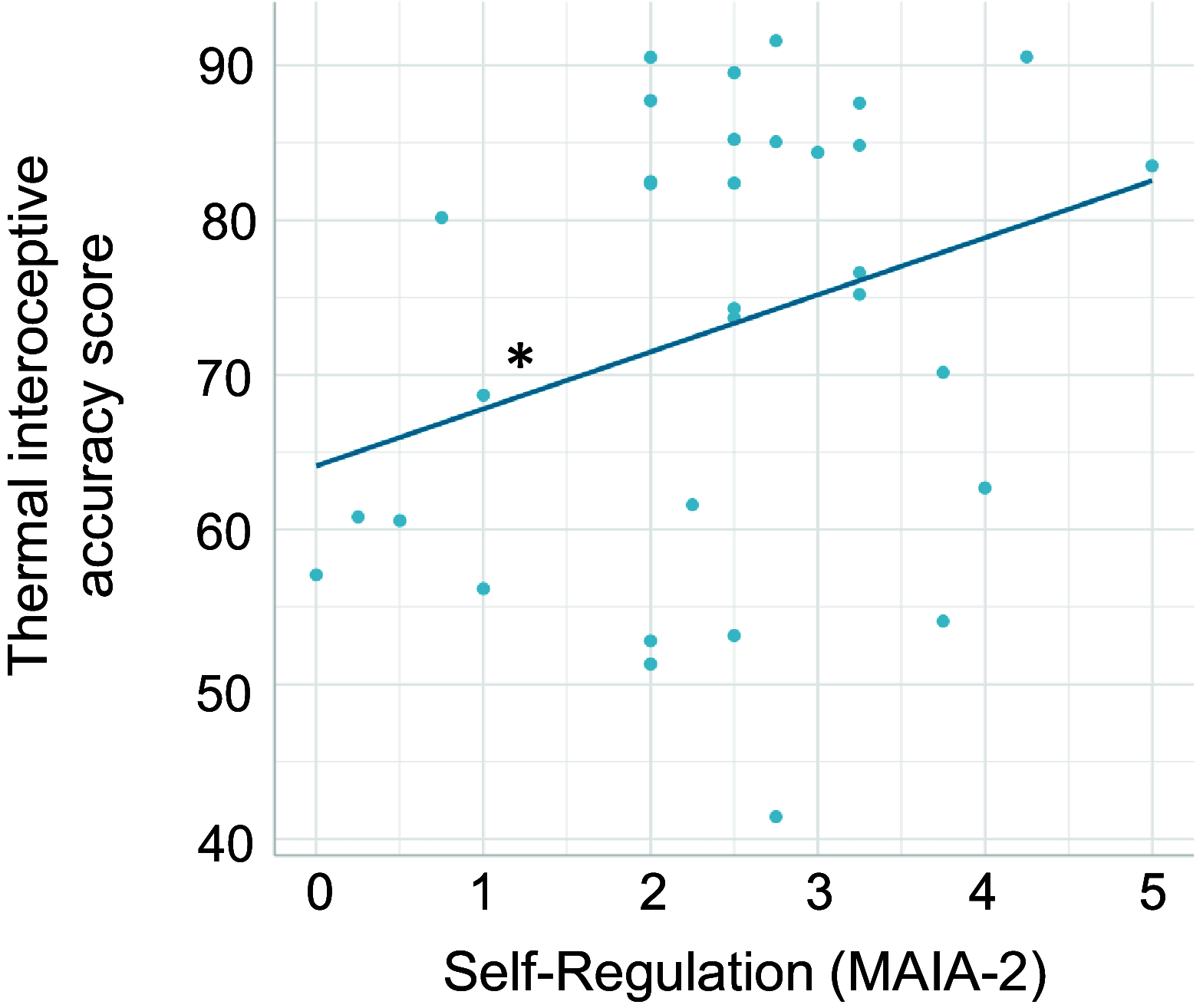The thermoception task: a thermal imaging-based procedure for measuring awareness of changes in peripheral body temperature
- PMID: 37529855
- PMCID: PMC10635420
- DOI: 10.1152/jn.00014.2023
The thermoception task: a thermal imaging-based procedure for measuring awareness of changes in peripheral body temperature
Abstract
Although thermal body signals provide crucial information about the state of an organism and changes in body temperature may be a sign of affective states (e.g., stress, pain, sexual arousal), research on thermal awareness is limited. Here we developed a task measuring awareness of changes in peripheral body temperature (thermal interoception) and compared it to the classical heartbeat counting task (cardiac interoception). With an infrared light bulb we delivered stimuli of different temperature intensities to the right hand of 31 healthy participants. Thermal interoceptive accuracy, i.e., the difference between participants' real and perceived change in hand temperature, showed good interindividual variability. We found that thermal interoception did not correlate with (and was generally higher than) cardiac interoception, suggesting that different interceptive channels provide separate contributions to awareness of bodily states. Moreover, the results hint at the great salience of thermal signals and the need for thermoregulation in day-to-day life. Finally, thermal interoceptive accuracy was associated with self-reported awareness of body temperature changes and with the ability to regulate distress by focusing on body sensations. Our task has the potential to significantly increase current knowledge about the role of interoception in cognition and behavior, particularly in social and emotional contexts.NEW & NOTEWORTHY We developed a novel task measuring awareness of changes in peripheral body temperature (i.e., thermal interoception). To avoid tactile confounds present in existing thermoceptive tasks, we used an infrared light bulb to deliver stimuli of different temperature intensities to the hand of participants and asked them to judge the perceived change in their hand temperature. Performance in the task showed good interindividual variability, did not correlate with cardiac interoceptive tasks, and was associated with self-reported thermosensitivity.
Keywords: body temperature; interoception; thermosensation.
Conflict of interest statement
No conflicts of interest, financial or otherwise, are declared by the authors.
Figures







Similar articles
-
Interoceptive ingredients of body ownership: Affective touch and cardiac awareness in the rubber hand illusion.Cortex. 2018 Jul;104:180-192. doi: 10.1016/j.cortex.2017.04.018. Epub 2017 May 1. Cortex. 2018. PMID: 28532579
-
Heartbeat evoked potentials reflect interoceptive awareness during an emotional situation.Sci Rep. 2025 Mar 8;15(1):8072. doi: 10.1038/s41598-025-92854-4. Sci Rep. 2025. PMID: 40057611 Free PMC article.
-
Interoception and gender: What aspects should we pay attention to?Conscious Cogn. 2017 Feb;48:129-137. doi: 10.1016/j.concog.2016.11.002. Epub 2016 Nov 17. Conscious Cogn. 2017. PMID: 27866005
-
From feeling chilly to burning up: How thermal signals shape the physiological state of the body and impact physical, emotional, and social well-being.Neurosci Biobehav Rev. 2025 Feb;169:105992. doi: 10.1016/j.neubiorev.2024.105992. Epub 2025 Jan 8. Neurosci Biobehav Rev. 2025. PMID: 39793684 Review.
-
Interoception and psychopathology: A developmental neuroscience perspective.Dev Cogn Neurosci. 2017 Feb;23:45-56. doi: 10.1016/j.dcn.2016.12.006. Epub 2016 Dec 23. Dev Cogn Neurosci. 2017. PMID: 28081519 Free PMC article. Review.
References
-
- Pinna T, Edwards DJ. A systematic review of associations between interoception, vagal tone, and emotional regulation: potential applications for mental health, wellbeing, psychological flexibility, and chronic conditions. Front Psychol 11: 1792, 2020. doi:10.3389/fpsyg.2020.01792. - DOI - PMC - PubMed
-
- Khalsa SS, Adolphs R, Cameron OG, Critchley HD, Davenport PW, Feinstein JS, Feusner JD, Garfinkel SN, Lane RD, Mehling WE, Meuret AE, Nemeroff CB, Oppenheimer S, Petzschner FH, Pollatos O, Rhudy JL, Schramm LP, Simmons WK, Stein MB, Stephan KE, Van den Bergh O, Van Diest I, von Leupoldt A, Paulus MP, Interoception Summit 2016 participants. Interoception and mental health: a roadmap. Biol Psychiatry Cogn Neurosci Neuroimaging 3: 501–513, 2018. doi:10.1016/j.bpsc.2017.12.004. - DOI - PMC - PubMed
Publication types
MeSH terms
LinkOut - more resources
Full Text Sources

